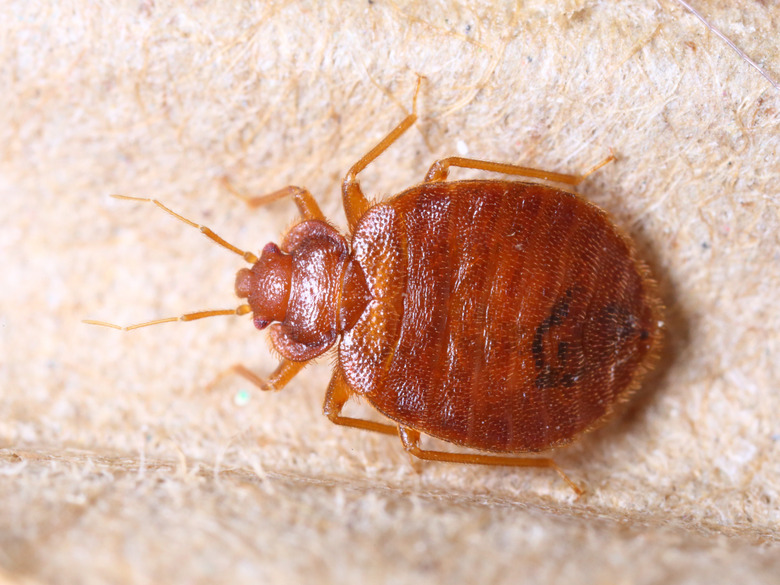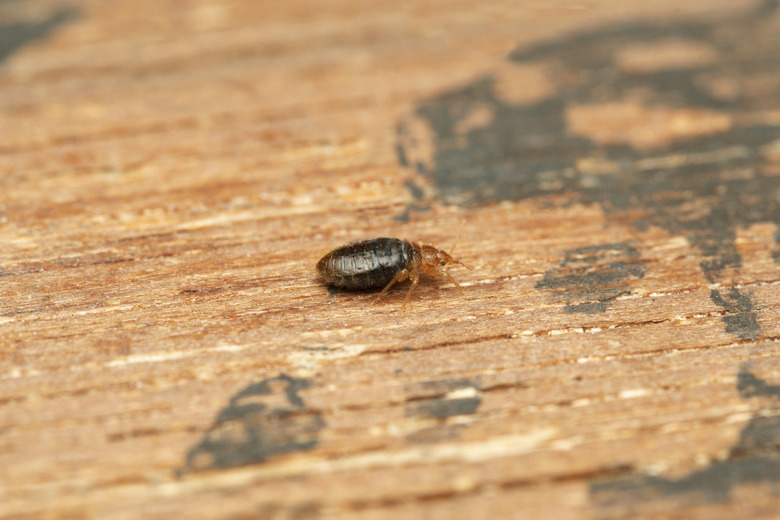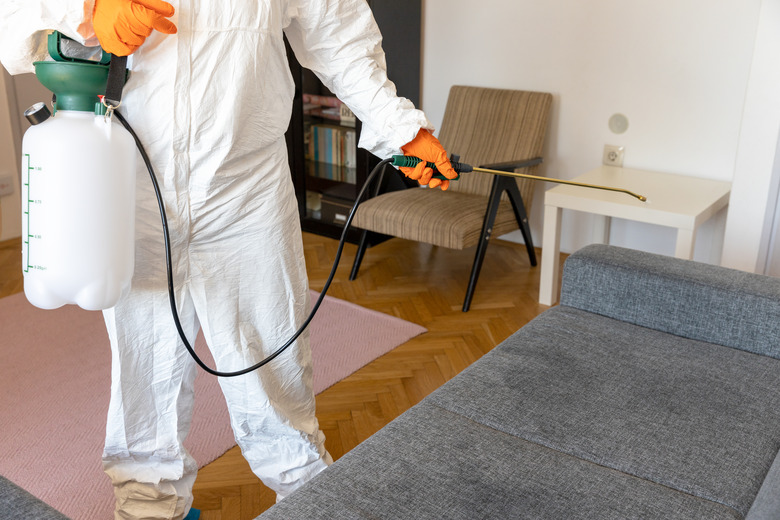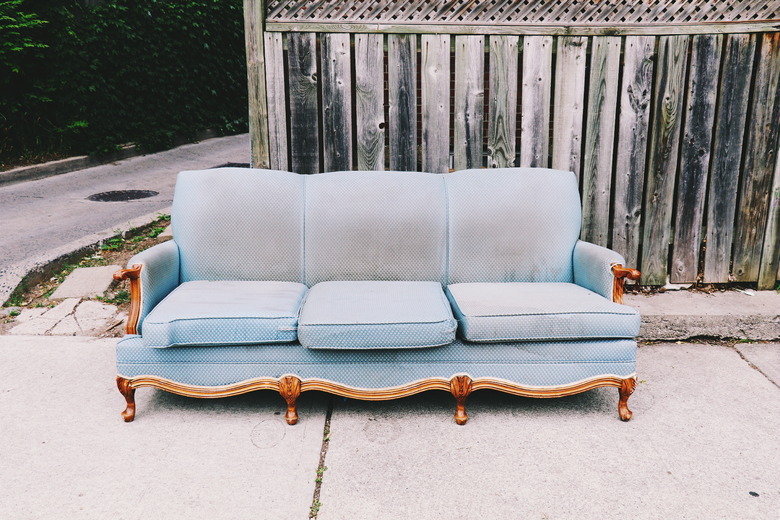How To Get Rid Of Bed Bugs
We may receive a commission on purchases made from links.
If you've ever woken up with itchy welts and blood stains on your sheets, you might just have yourself a bedbug infestation. While these annoying pests don't harbor any diseases, bedbugs are particularly difficult pests to deal with — and the longer you wait to take care of them, the more they will multiply. In fact, because the DIY treatment methods are so time-consuming, most people prefer to work with a professional exterminator to eliminate these pesky little bugs as quickly as possible.
What Do Bedbugs Look Like?
What Do Bedbugs Look Like?
- Species name: Bedbugs (Cimex lectularius)
- Physical characteristics: Adult bedbugs have brown, oval, flat bodies about the size of an apple
seed. Their bodies swell and turn reddish after eating.
- Wings or wingless? Wingless
- Life cycle and appearance: Eggs are around the size of a speck of dust. After
hatching, nymphs shed their skin each time they eat to accommodate their
increased size. They reach maturity after their fifth meal, typically within a
month of hatching.
How to Get Rid of Bedbugs
How to Get Rid of Bedbugs
If you've noticed bites on your skin after a night of sleeping, your first thought might be bedbugs — but these are easily mixed up with bites from other bugs, such as mosquitoes and fleas. Before attempting to get rid of bedbugs you should ensure that they are indeed the pest in your home. From there, you'll likely need to seek out professional pest control services to eliminate them completely. However, there are a few things you can try before you call in a pro for help.
Bedbugs breed year-round, with each mature female laying 10 eggs per day. Each bug can live as long as one full year. This means treatments should begin as quickly as possible to keep the number of bugs in check.
Verify That You Have Bedbugs
The first sign of bedbugs is red welts on your entire body. To make sure you have bedbugs, start by examining your sheets and pillowcases and keeping a lookout for blood stains or bedbug feces, which look like dark or rust-colored spots. Next, remove your bedding and search for bugs, their shedded skins, or feces on the mattress itself. Then, examine your box spring followed by the bed frame and headboard.
Also check other areas near beds, including books, stereos, carpet edges, baseboards, electrical outlets, and clothing in your closet and hamper. If you sleep on any upholstered chairs or couches, check the fabric folds and under the cushions.
New infestations are typically limited to the area around the bed, so if you don't see any distinctive signs of bedbugs, you probably are getting bit by something else. If you aren't sure if an insect is a bedbug, seal one in a plastic bag and ask a local county extension office or an exterminator to identify it for you.
Clean Your Space
After discovering you have bedbugs, you need to immediately clean to reduce the likelihood of the bugs leaving the infested room and multiplying in other places. Follow this cleaning routine as quickly as possible:
- Wash anything fabric. Wash bedding, linens, clothing,
and curtains in hot water and then dry them on your dryer's highest setting since
bedbugs and their eggs die at temperatures above 122 degrees Fahrenheit. - Dry items on the hottest setting. Put items that can't be washed, such as stuffed animals, decorative
pillows, and shoes, in a dryer on its hottest setting for an hour as long as
the material can handle high heat. Place items that cannot be treated with heat
in airtight plastic bags and leave them in a garage or shed for at least three months. - Eliminate all clutter. Especially clear all items near your bed, and throw away any trash in an outdoor trash can.
- Clean your furniture. Using a stiff brush, scrub your mattress seams, the
corners of your drawers, and underneath your furniture in order to shake free bedbugs and their eggs. - Vacuum thoroughly. Vacuum the mattress, the box springs, and the
carpet around and under the bed. Use an angled hose attachment along the carpet
edges, the corners of your drawers, underneath your furniture, and along your
baseboards to suck out hiding bedbugs. Immediately dump out your vacuum
chamber or throw out the vacuum bag in an outdoor garbage can after use. - Protect your mattress. Place both your mattress and box springs in a bugproof mattress cover that will trap bedbugs already in the mattress so they
cannot escape. If you throw out your old mattress and buy a new one without an
encasement, your new mattress will get infested too.
Heat Treatments
Professionals can use heat treatments on a whole room, bringing the temperature of all areas of the room above 122 degrees. While this isn't something an amateur can attempt, there are some forms of heat treatment you can try. A heat steamer that reaches at least 212 degrees can kill bedbugs on your mattress, bed frame, box springs, furniture, carpeting, and along the baseboards where bedbugs may hide. Avoid using steam near electrical outlets, on wallpaper, or on finishes or materials that can be damaged by steam. Steam every few days if possible.
You can also buy a heat chamber and place your items inside it to kill bedbugs on clothes, shoes, picture frames, or other small items in your bedroom. If your local outdoor temperatures reach over 95 degrees, you can even put your items into black trash bags, leave them out on the driveway, and let nature do the work for you.
Conventional Pesticides
Pesticides available to bedbug exterminators are available to the public as well, but be aware that many bedbugs have developed a resistance to pyrethrins and pyrethroids, the two most commonly used pesticides for indoor pests. For this reason, it's best to consider using chlorfenapyr, neonicotinoids, or insect growth regulators, all of which remain effective against bedbugs. No matter what product you use, be aware that it typically takes at least two treatments that are two weeks apart to kill adult bedbugs and the following generation of newly hatched nymphs.
When using pesticides, always follow product directions to the letter. Most pesticides are not approved for use on mattresses, and those that are should only be applied to the tufts and seams of the mattress, not along the entire mattress itself, so you will still need to encase it after application. When using an aerosol bedbug spray, always use the provided straw to help direct the product into cracks and crevices. Avoid using bug bombs or foggers, as these are largely ineffective since they fail to enter the spaces where these pests live.
Before starting treatment, always use a vacuum cleaner to remove as many bugs as possible. Use pesticides on every nook of your room, even if you aren't sure if there are bedbugs living there. Treat all affected rooms at once to prevent the bugs from hitchhiking from one area to another.
When to Hire a Pro
When to Hire a Pro
Unfortunately, eliminating bedbugs is particularly difficult even for pest management professionals, but given their level of experience and access to specialized products, it's typically best to work with a pest control company if you have a bedbug infestation. A professional will help you choose the best combination of treatment methods to eliminate bedbugs in your home, which could include steam, heat, cryonite (freezing temperatures), or chemical treatments.
Typically, steam, heat, and cryonite treatments are the quickest and most effective professional methods because they completely eliminate all bedbugs instantly. The downside is that these leave no residual pesticide behind, so if any bedbugs survive, the room could become infested again. This is why most companies leave a dusting of silica dust or diatomaceous earth to help eliminate any stragglers.
Professional insecticide treatments are also effective, though they take much longer — typically between four and six weeks. At least two treatments are required since pesticides don't kill bedbug eggs. Before applying pesticides, contractors typically remove the insects through a nonchemical effort by using brushes to get them out of their hiding places and vacuuming the infested areas.
Professional treatments typically cost around $200 to $400 per room, and heat treatments and pesticides are usually the cheapest options.
Getting Rid of Bedbugs Naturally
Getting Rid of Bedbugs Naturally
Remember that just because something is "natural" does not mean it is harmless. Many organic substances can cause skin, eye, or lung irrigation, especially when used on a mattress where you sleep. This is why you should only use products approved by the Environmental Protection Agency (EPA) for bedbug eradication. Two of the best natural EPA-approved treatments are silica dust and diatomaceous earth. These products are considered desiccants, meaning they dehydrate the bedbugs until they die.
Simply sprinkle these products around the edge of your room, in cracks and crevices, in the corners of your furniture, and in your box springs. These products can take a while to kill, but they stay effective as long as they remain in place. Do not apply these products to your mattress or across your entire carpet. Avoid using food-grade versions of diatomaceous earth since it is so fine that you may suffer nose and lung irritation after inhaling.
How Bedbugs Get In Your House
How Bedbugs Get In Your House
Unlike many other pests, bedbug infestations have nothing to do with how clean your home is. The two main causes of bedbug infestations are infested luggage or used furniture since the flat bodies of bedbugs allow them to squeeze undetected in tiny crevices.
To keep bedbugs out of your home, never place your luggage on a hotel mattress. When you first enter your hotel room, lift the sheets off the mattress and inspect the folds in the mattress and any crevices in the headboard before sitting or laying on the bed. When you return home from a trip, check your luggage outside before bringing in your bags. If you detect bedbugs, immediately remove your clothing and wash and dry them on your laundry's highest settings. Vacuum and steam clean your bags before taking them in.
Be wary of used furniture and mattresses, and if you do take any previously owned items home, be sure to thoroughly inspect all nooks and crannies for bedbugs.
Do Bedbugs Spread Disease?
Do Bedbugs Spread Disease?
If there is any sort of an upside at all about bedbugs, it's that while dealing with an infestation is a literal pain thanks to the red welts they leave behind, the good news is that they don't transmit disease. Even so, you should attempt to end an infestation as soon as possible for your own comfort.
References
- Healthline: How to Get Rid of Bedbugs
- Texas A&M AgriLife Extension: Bed Bugs: Do-it-Yourself Control Options
- United States Environmental Protection Agency: Pesticides to Control Bed Bugs
- HomeAdvisor: How Much Does Bed Bug Treatment Cost?
- United States Environmental Protection Agency: Do-it-Yourself Bed Bug Control
- Nextgen Pest Solutions: How To Get Rid of Bed Bugs – The Ultimate Guide for 2021
- WebMD: Bedbugs



